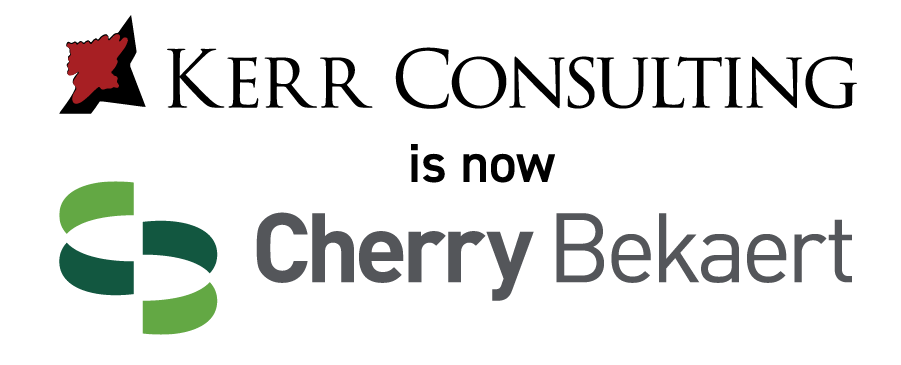Sage Intacct Integration Guide: Streamlining Business Processes

In the realm of financial management, Sage Intacct stands as a leading cloud accounting solution. Its robust features and capabilities have made it a preferred choice for many businesses.
Yet, to fully leverage its potential, integration with other systems is crucial. This is where our Sage Intacct Integration Guide comes into play.
This guide aims to provide a comprehensive overview of integrating Sage Intacct with various systems and applications. It will delve into the benefits of such data integration, the steps involved, and best practices to follow.
Whether you're a financial manager, an IT professional, or a business owner, this guide will be of value. It will help you enhance your financial management and reporting capabilities through effective integration.
So, let's embark on this journey of streamlining business processes through Sage Intacct integration. The future of your financial management starts here.

Understanding Sage Intacct Integration
Sage Intacct integration is the process of connecting Sage Intacct with other systems and applications. This connection allows for seamless data exchange and process automation.
The integration is facilitated by Sage Intacct's open API. This API provides a framework for developers to create custom integrations that suit unique business needs.
Common types of integrations include CRM, eCommerce, payroll, and other financial systems. These integrations help consolidate data and streamline workflows across different platforms.
Here are some key aspects of Sage Intacct integration:
- Improved data accuracy
- Real-time reporting
- Enhanced financial decision-making
- Better team collaboration and productivity
In essence, Sage Intacct integration is a strategic move towards efficient and effective financial management.
The Importance of Cloud Integration in Financial Management
Cloud integration plays a pivotal role in modern financial management. It allows for real-time access to financial data, regardless of location or device.
This accessibility enhances decision-making capabilities. It provides financial managers with up-to-date information, enabling them to make informed decisions swiftly.
In a nutshell, cloud integration is a game-changer in financial management, driving efficiency, flexibility, and strategic decision-making.
Key Benefits of Automating Accounting Processes
Automation is another significant advantage of Sage Intacct integration. It eliminates manual data entry, reducing the risk of errors and saving valuable time.
Automated workflows also ensure consistency in financial processes. They provide a standardized approach to tasks such as invoicing, budgeting, and reporting.
In conclusion, automating accounting processes through Sage Intacct integration leads to increased accuracy, efficiency, and consistency in financial management.
Kerr Consulting
Kerr Consulting excels in integrating Sage Intacct with other vital business systems, providing a seamless flow of information across your entire operation. Their integration solutions help you unlock the full potential of your ERP system, offering enhanced visibility, automation, and control over financial and operational data.
By partnering with Kerr Consulting, you ensure that your Sage Intacct system is not just implemented but fully integrated, driving efficiency and accuracy across your organization.
Maximize your
Sage Intacct experience with Kerr Consulting’s expert integration services.
Contact us today to learn how we can connect and optimize your business systems!

Planning Your Sage Intacct Integration
Planning is a crucial step in any integration project. It sets the foundation for a successful Sage Intacct integration.
The planning phase involves identifying business needs, setting integration goals, and choosing the right tools and partners. It's about aligning the integration strategy with overall business objectives.
Here are some key steps in planning your Sage Intacct integration:
- Identify business needs and integration goals
- Choose the right integration tools and partners
- Prepare your data and systems for integration
- Navigate the technical aspects of Sage Intacct's API
In essence, a well-planned integration project is more likely to meet business needs and achieve desired outcomes.
Identifying Business Needs and Integration Goals
Identifying business needs is the first step in planning your Sage Intacct integration. It involves understanding your current financial processes and identifying areas for improvement.
Next, you need to set clear integration goals. These goals should align with your business objectives and should be measurable.
In conclusion, understanding your business needs and setting clear integration goals is crucial for a successful Sage Intacct integration.
Choosing the Right Integration Tools and Partners
Choosing the right tools and partners is another critical step in planning your Sage Intacct integration. The right tools should be able to meet your integration goals and grow with your business.
When choosing integration partners, consider their expertise, support services, and track record. A good partner should be able to guide you through the integration process and provide ongoing support.
In essence, the right tools and partners can make your Sage Intacct integration a smooth and successful process.

Executing the Integration: A Step-by-Step Approach
Executing the integration is the next crucial step. It involves preparing your data and systems, navigating the technical aspects of Sage Intacct's API, and testing the integration.
Here are some key steps in executing your Sage Intacct integration:
- Prepare your data and systems for integration
- Navigate the technical aspects of Sage Intacct's API
- Test the integration
In essence, a well-executed integration can enhance your financial management capabilities and streamline your business processes.
Preparing Your Data and Systems for Integration
Preparing your data and systems for integration is a critical step. It involves cleaning and organizing your chart of accounts, mapping data, and ensuring data integrity during the transfer process.
A clean and organized chart of accounts can facilitate a smooth integration process. Data mapping is also crucial for successful software integration.
In conclusion, preparing your data and systems for integration can significantly enhance the success of your Sage Intacct integration.
Navigating the Technical Aspects of Sage Intacct's API
Navigating the technical aspects of Sage Intacct's API is another critical step in executing your Sage Intacct integration. The API facilitates integration by allowing data exchange between Sage Intacct and other systems.
Understanding the API's capabilities and limitations can help you leverage its full potential. It's also important to ensure that your integration solution is compatible with Sage Intacct's API.
In essence, understanding the technical aspects of Sage Intacct's API can make your integration process smoother and more efficient.

Leveraging Sage Intacct Reporting and Automation
Sage Intacct's reporting and automation capabilities are powerful tools. They can enhance decision-making and streamline workflows.
By integrating Sage Intacct with other systems, you can leverage its reporting capabilities. This can provide enhanced business insights.
Moreover, Sage Intacct's automation tools can streamline your accounting processes. This can lead to improved efficiency and productivity.
Enhancing Decision-Making with Real-Time Data
Real-time data is a game-changer in decision-making. It provides up-to-date information, enabling quick and informed decisions.
With Sage Intacct integration, you can have real-time data at your fingertips. This can lead to better financial decision-making.
In essence, real-time data can significantly enhance your decision-making process. It's a key benefit of Sage Intacct integration.
Streamlining Workflows with Automation Tools
Automation tools are essential in today's business environment. They can streamline workflows and improve efficiency.
With Sage Intacct integration, you can automate various accounting processes. This can save time and reduce errors.
In conclusion, automation tools can significantly streamline your workflows. They are a key benefit of Sage Intacct integration.
Best Practices for Sage Intacct Integration Maintenance
Maintaining your Sage Intacct integration is crucial. It ensures the system continues to function optimally.
Here are some best practices for Sage Intacct integration maintenance:
- Regularly monitor and update integrations
- Ensure data integrity and security post-integration
- Provide continuous training and support
These practices can help maintain the efficiency of your integration.
Ensuring Data Integrity and Security Post-Integration
Data integrity and security are paramount in any integration. They ensure the accuracy and consistency of data over its entire lifecycle.
With Sage Intacct integration, you can ensure data integrity. This is achieved through real-time data synchronization across systems.
Moreover, Sage Intacct integration also ensures data security. It does this by adhering to industry-specific regulations and maintaining a robust disaster recovery plan.
Training and Support for Continuous Improvement
Training and support are crucial for continuous improvement. They ensure users can effectively use the integrated system.
With Sage Intacct integration, you can provide continuous training and support. This can help users adapt to the new system and optimize its use.
In conclusion, training and support are key to the success of your Sage Intacct integration. They ensure continuous improvement and user adoption.
Conclusion: The Future of Financial Management with Sage Intacct
Sage Intacct integration is transforming the future of financial management. It's enabling businesses to streamline processes, enhance decision-making, and improve financial compliance.
With continuous advancements in cloud integration and automation tools, Sage Intacct is set to redefine the landscape of accounting solutions. It's a promising future for businesses seeking to leverage technology for financial management.








